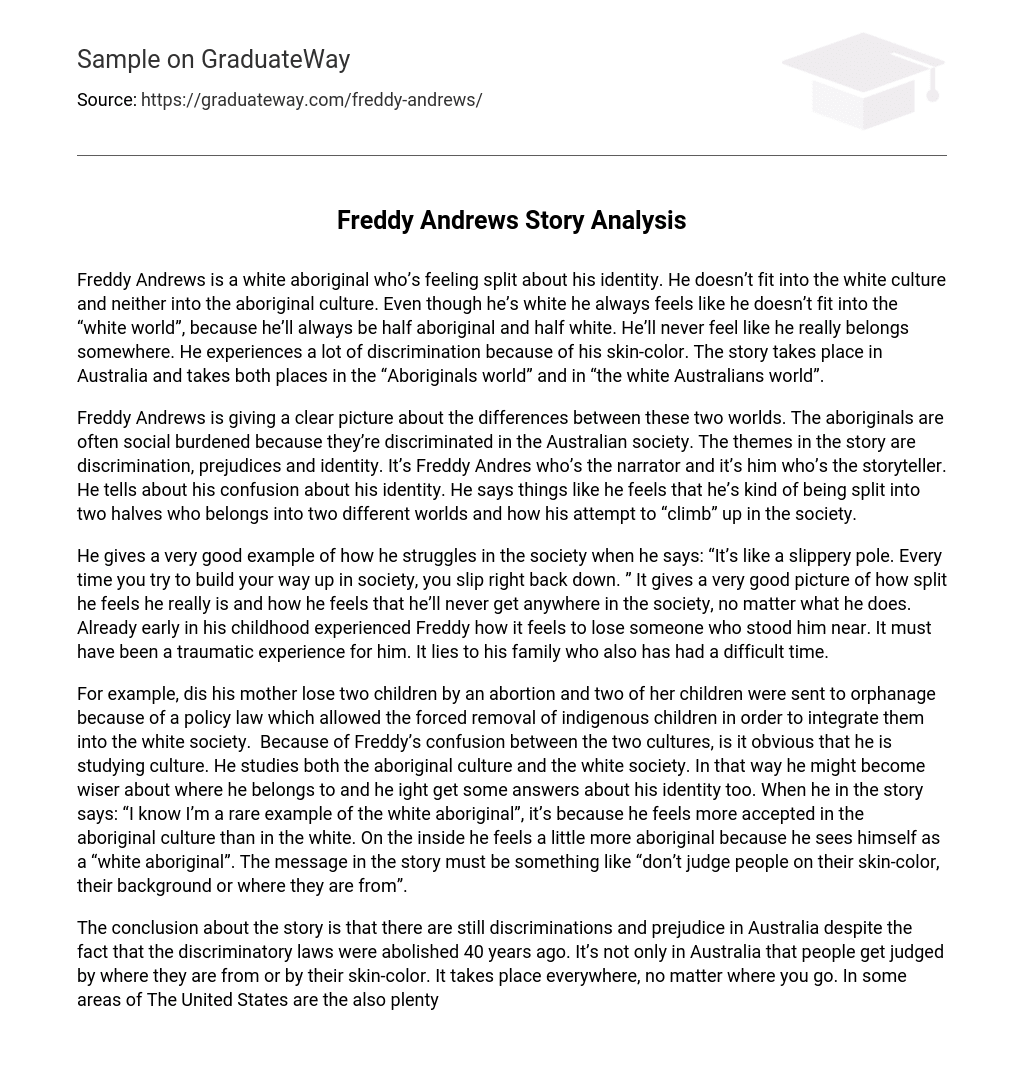Freddy Andrews is a white aboriginal who’s feeling split about his identity. He doesn’t fit into the white culture and neither into the aboriginal culture. Even though he’s white he always feels like he doesn’t fit into the “white world”, because he’ll always be half aboriginal and half white. He’ll never feel like he really belongs somewhere. He experiences a lot of discrimination because of his skin-color. The story takes place in Australia and takes both places in the “Aboriginals world” and in “the white Australians world”.
Freddy Andrews is giving a clear picture about the differences between these two worlds. The aboriginals are often social burdened because they’re discriminated in the Australian society. The themes in the story are discrimination, prejudices and identity. It’s Freddy Andres who’s the narrator and it’s him who’s the storyteller. He tells about his confusion about his identity. He says things like he feels that he’s kind of being split into two halves who belongs into two different worlds and how his attempt to “climb” up in the society.
He gives a very good example of how he struggles in the society when he says: “It’s like a slippery pole. Every time you try to build your way up in society, you slip right back down. ” It gives a very good picture of how split he feels he really is and how he feels that he’ll never get anywhere in the society, no matter what he does. Already early in his childhood experienced Freddy how it feels to lose someone who stood him near. It must have been a traumatic experience for him. It lies to his family who also has had a difficult time.
For example, dis his mother lose two children by an abortion and two of her children were sent to orphanage because of a policy law which allowed the forced removal of indigenous children in order to integrate them into the white society. Because of Freddy’s confusion between the two cultures, is it obvious that he is studying culture. He studies both the aboriginal culture and the white society. In that way he might become wiser about where he belongs to and he ight get some answers about his identity too. When he in the story says: “I know I’m a rare example of the white aboriginal”, it’s because he feels more accepted in the aboriginal culture than in the white. On the inside he feels a little more aboriginal because he sees himself as a “white aboriginal”. The message in the story must be something like “don’t judge people on their skin-color, their background or where they are from”.
The conclusion about the story is that there are still discriminations and prejudice in Australia despite the fact that the discriminatory laws were abolished 40 years ago. It’s not only in Australia that people get judged by where they are from or by their skin-color. It takes place everywhere, no matter where you go. In some areas of The United States are the also plenty of prejudice against black people.
No matter where you go, people will always have prejudices and that will probably never disappear completely. People have always had prejudges against each other and we have had that through many thousands of years. It’s sad to think about but that’s unfortunately the truth. The aboriginals have and might always have a hard time, finding their place in the society; it’ll probably change slowly over time how well the aboriginals are going to fit into the white society, but the prejudges against other people are probably never going to disappear completely.





